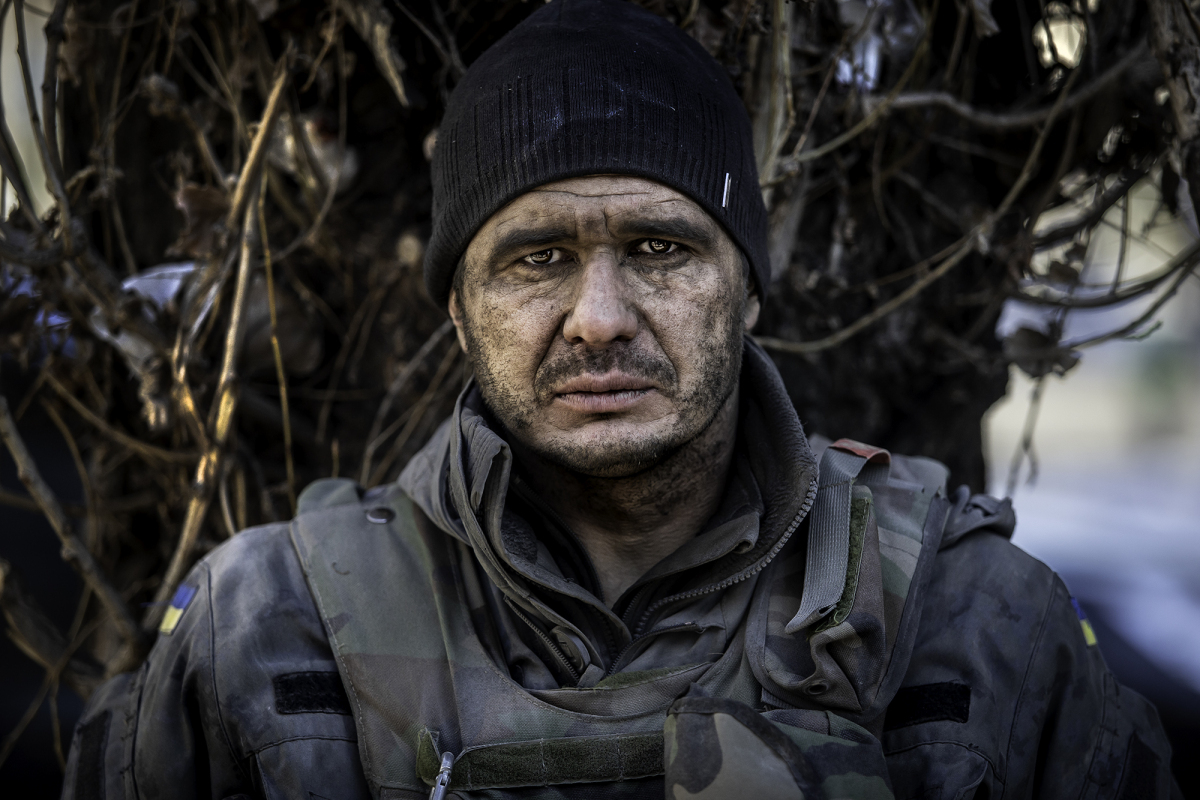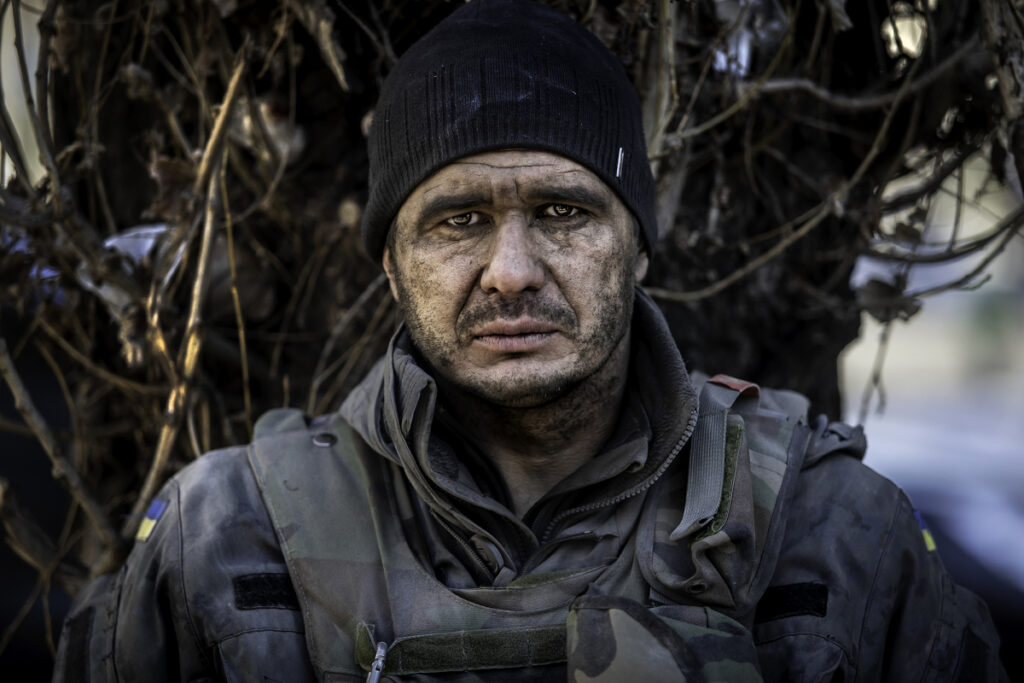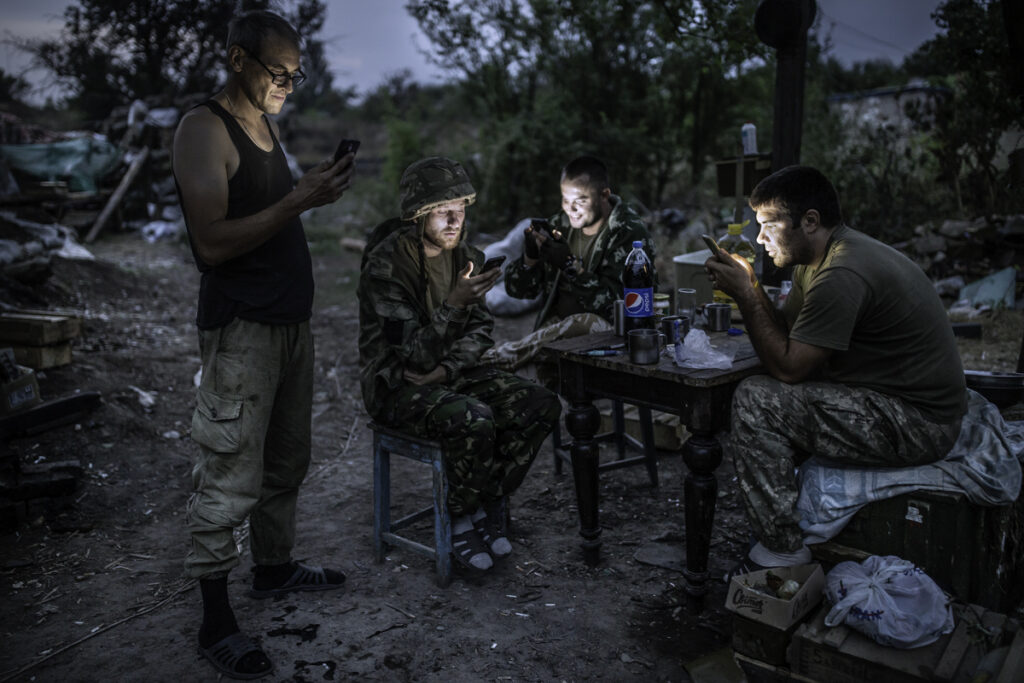
By Rory York | Editor-At-Large | ayork@mail.smcvt.edu

February, 2015, Artymousk.
The walls are covered with images of rubble, destruction, and soldiers. Dmitri Beliakov’s photography exhibit: On the Margins of Europe: War Before the War opened at St. Michael’s College on Oct. 30.
Born in Russia, Beliakov has documented numerous conflicts. His photographs have been used in several publications, including The New York Times, The Sunday Times, and the Daily Telegraph.
Before the event started, Beliakov lounged in a chair in a study room off to the side. “Shall I get fancy?” Beliakov said, gesturing to his clothing. He wore a green jacket over his t-shirt, and a thick scarf that contrasted with his Rhode Island hat.
Beliakov first picked up a camera while interning at the Moscow Bureau of the Daily Express, a UK tabloid.
“There was a guy who worked for them, somebody named Roman…he’s dead now, and he looked super cool with all those cameras hanging around his shoulders,” Beliakov said.
Inspired by Roman, Beliakov picked up a camera and started to practice. “Roman kept bashing me, he said ‘Dmitri, you should stop taking pictures because this is dangerous for blood pressure of photo editor in the world,’” Beliakov said.
But he kept at it.
“My first baptism of fire was 1994. I was 24 years old when I went to the war zone for the first time. That was the first Chechen campaign, and I just continued,” Beliakov said.
“If you don’t have people like me on the ground, there will be a situation…where people will say, we did not know. Nobody told us,” Beliakov said.
In debates surrounding photojournalism, there is always an argument about neutrality, with many journalism textbooks preaching the importance of being unbiased and neutral.
Beliakov completely rejects neutrality. Despite his Russian background, he is against Russia, and found it difficult to cover both sides of any conflict when he knew the actions Russia was taking.
“We all proclaim that, yes, we have to be neutral. But…after Azerbaijani and Armenian war, I think that I’ve lost my interest in being objective,” Beliakov said.
He has photographed many innocents killed in wars, often children. “I have PTSD, that’s for sure, because I covered seven armed conflicts. I’ve been affected heavily,” Beliakov said.
He said coped with the terrible things he was seeing by concentrating on the details in the frame.
“You fight with lots of parasites in the pictures, like for example you’re taking a picture of, let’s say, a dead woman right in the middle of a cornfield,” Beliakov said.
“And then you see some guy in a red jacket. You don’t want him there. You don’t think, oh this is devastating. You think, why is this guy in a red jacket there?”


To get a great photo of a terrible moment, Beliakov focused on the different aspects of his composition like exposure, light, and filter to help him see past the subjects of the photo.
At the exhibition opening, Yamuna Turco, ’24, asked, “This might seem incredibly naive, but do you have hope?”
“Hope for what?” Beliakov said “Hope for the war, hope for the world? Hope for what?”
“Just, hope. Do you have hope?” Turco said.
“No. I do not have hope.” Beliakov said.
“My photos are supposed to show Ukraine as a country,” Beliakov said. “To show the humanity and the daily struggle of people caught in the middle. Wars are not fought in the interest of ordinary people.”
Beliakov will be giving a talk entitled Putin’s War in Ukraine: How the West is Failing Kiev on November 11 in the Roy Room on Dion Family Student Center third floor. The exhibition runs through Nov. 14.

